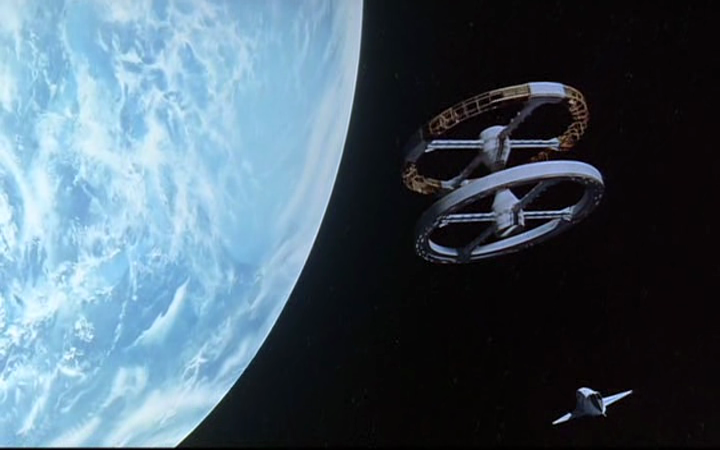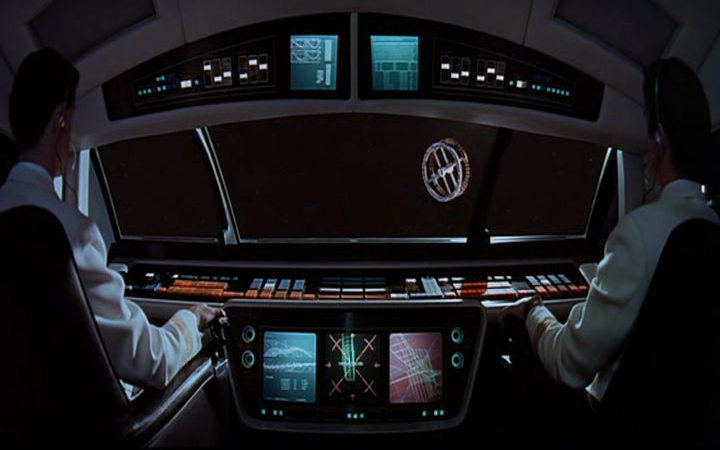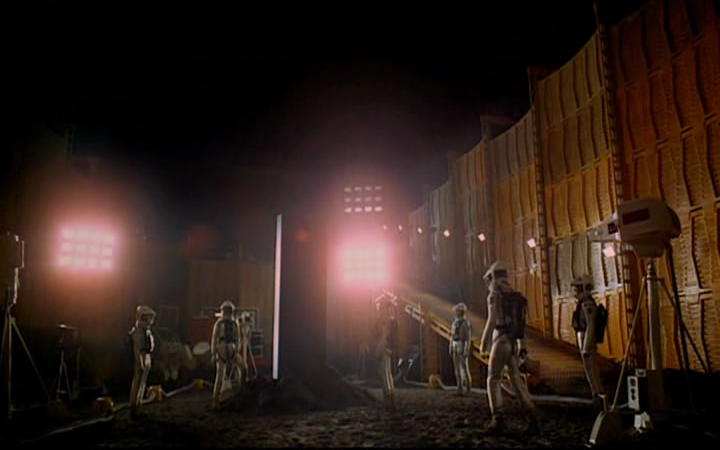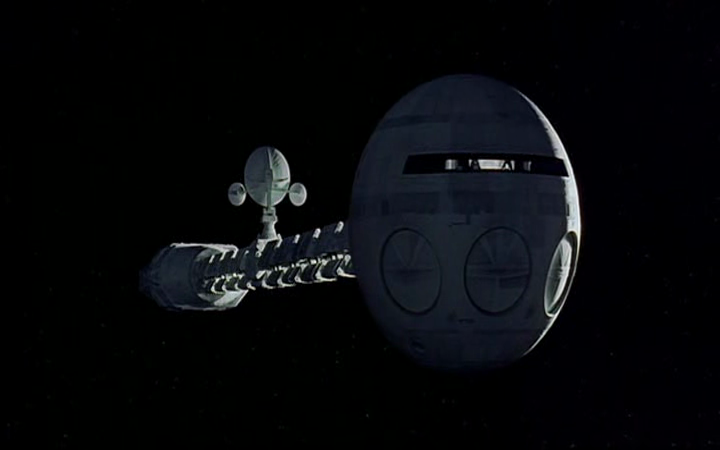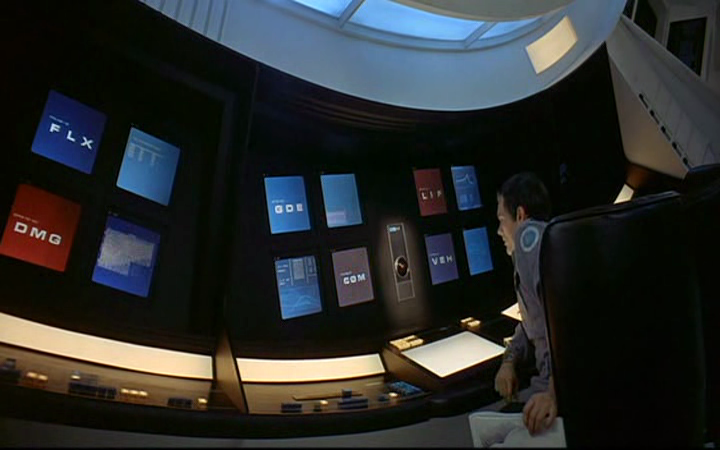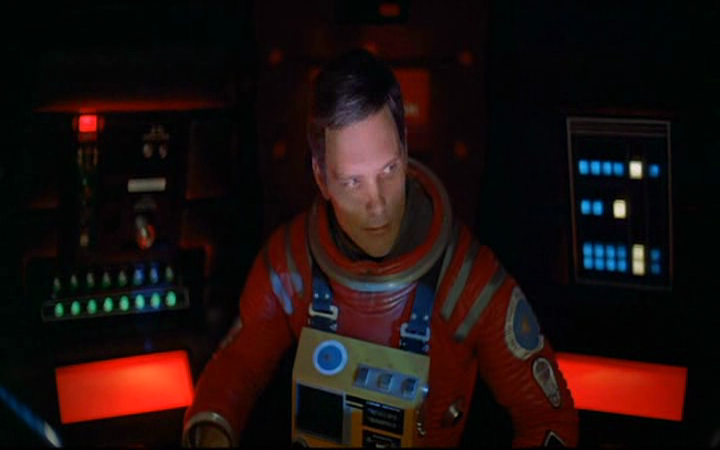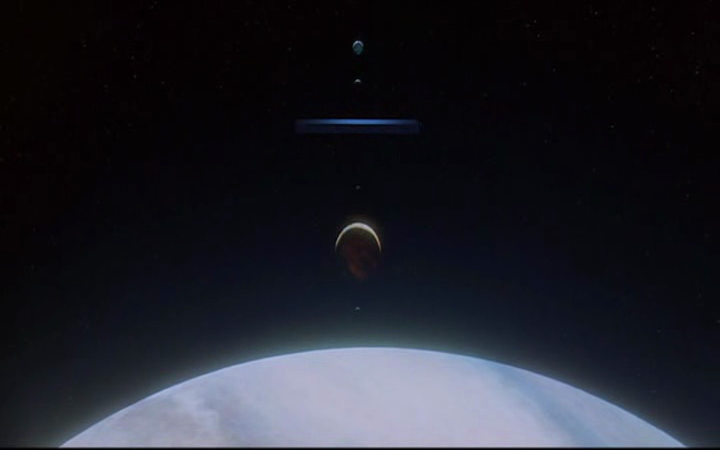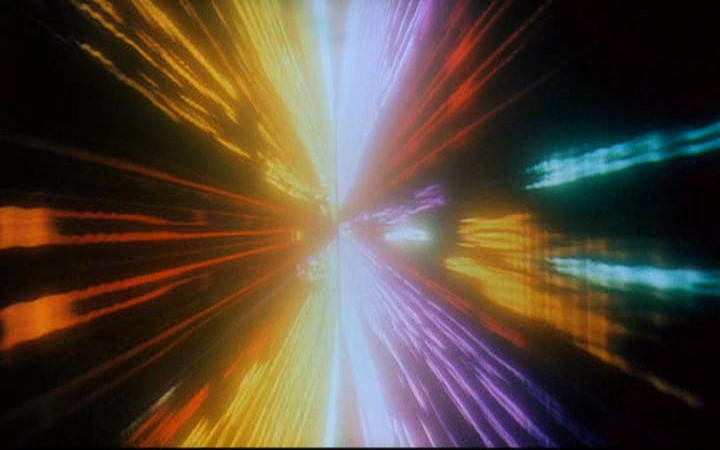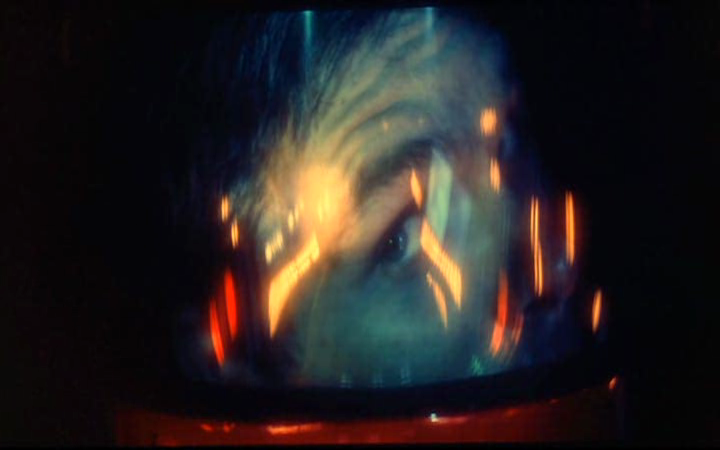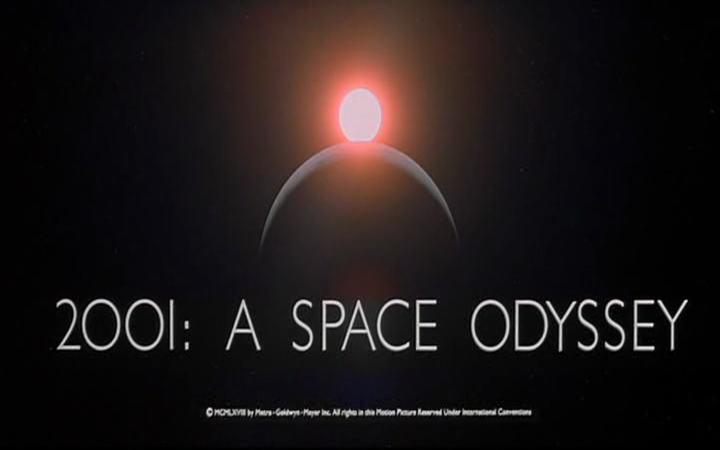
#2 – 2001: A Space Odyssey
2001: A Space Odyssey (1968)
Film review #2
dir. Stanley Kubrick
Stanley Kubrick’s landmark film that really set the bar for set design and technical wizardry in the genre of science-fiction. Based on the short story by Arthur C.Clarke entitled “The Sentinel”, the film is split into four main sections. The first, entitled “The dawn of Man”, is set millions of years in the past, and follows a tribe of ape men, who stumble one of the mysterious black monoliths, and soon after figure out how to use tools and weapons. The next act is set en route to, and on the moon in the year 2001, where another monolith has been uncovered. It emits a signal which kills everyone at the site, which leads onto the third act, in which a crew (Lead by Dr. David Bowman) is tracing the signal the monolith sent to Jupiter. The final act entitled “Jupiter and beyond the infinite” is ambiguous as its title, with Bowman arriving at Jupiter, and encountering a large monolith which takes him on a journey far beyond human experience…
A lot of the images and scenes in 2001 have become culturally famous and recognisable outside of the film. The Discovery’s computer, HAL 9000 is one of the most recognised characters that is basically just a computer. The image of the monoliths is also one that has transcended its origins in the movie and is recognisable in other guises; reparring and being referenced in numerous TV show and such over the years. The “match-cut” of the skeletal bone to the space station which joins the first and second acts, as well as the final image of the fetus overlooking the Earth are also famous and recognisable scenes from the film.
Kubrick’s films are well known for their ambition and technical accuracy. The models of the spaceship and the accounts of artificial gravity were all carefully worked out and portrayed as accurately as possible. Since man had not even landed on the moon when this movie was released, I imagine there was a lot of guesswork done, based on mankind’s very limited experience in space. For the most part though, it seems to have aged extremely well with time, and these sets and technical props are futuristic, yet still have that sense of attainability. The only exception to this, is the obvious fact that 2001 has been and gone, and it looked nothing like what this film portrayed (For a start, the cold war ended twenty years ago), still, it could eventually happen a little in our future…
The use of sound and special effects has a very “artistic” direction in this film. The soundtrack is composed of a number of classical pieces, and accompanied by a lot of silence. Dialogue is also only used minimally throughout the movie. Because of this, it deviates from the traditional scripts of cinema being action-orientated, and 2001 develops along a very unique artistic direction, touching along aspects of the sublime and the numerous, especially during the final act. The special effects and design are well very well put together, so much so I think it would still look relevant if it were released today, as the movie as a whole has aged very well.
Overall, 2001 is a key movie in the development of science-fiction in cinema, and has a lot of cultural significance. On top of this, it is also a joy to watch. It is something one has to watch with an open mind, since comparing it to other films would be futile as it is truly a unique experience.
A lot of the images and scenes in 2001 have become culturally famous and recognisable outside of the film. The Discovery’s computer, HAL 9000 is one of the most recognised characters that is basically just a computer. The image of the monoliths is also one that has transcended its origins in the movie and is recognisable in other guises as it is referenced across TV shows and other mediums. The “match-cut” of the skeletal bone to the space station which joins the first and second acts, as well as the final image of the fetus overlooking the Earth are also famous and recognisable scenes from the film.


